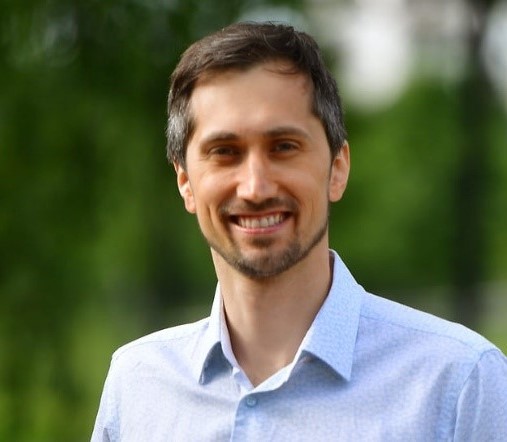Kolloquiumsprogramm
Das Kolloquium wird in Zusammenarbeit mit dem Forschungsverbund VINAR und der GeoSphere Austria (früher ZAMG) durchgeführt.
Alle Vorträge sind ohne Anmeldung öffentlich zugänglich!
Datum: Dienstags von 16:45 bis 18:15 Uhr
Raum: 2F513 (Exner-Raum), Josef-Holaubek-Platz 2, UZA 2, 1090 Wien und online!
-
09/04/2024 - Adrian TOMPKINS: "Tropical convective clustering in toy models, serious models, and nature's ultimate model (observations!)"
Adrian TOMPKINS (ICTP)
Over 30 year ago, it was discovered that deep convection in idealized simulations of radiative-convective equilibrium (RCE) using convection permitting models could could undergo a spontaneous transition from a random state to a highly organised state in which convection is clustered in one part of the domain. In the intervening period, we have understood how this clustering can affect the tropical energy budget and how diabatic forcing, in particular cloud-long wave radiative forcing, can lead to clustering. However, the details and onset characteristic of clustering remain highly model-specific.
In this talk, we will show how the characteristics of the bistable random/clustered states can be reproduced in a simple stochastic toy model, and use this to derive a dimensionless parameter that predicts whether a given model will cluster. We will then move to examining aspects of organisation in tropical observations, showing how both clustered and random type situations can be found on the mesoscale in the warm pool region, and how these states relate to tropical wave dynamics. We will argue that understanding convection organisation on the mesoscale is important for understanding basin-wide tropical energy budgets.
Tuesday, 16:45h - 18:15h
Location: Room 2F513, (Exner-Raum), Josef-Holaubek-Platz 2, UZA 2, 1090 Vienna and online!
-
23/04/2024 - Yong WANG: "Calibrating CMA multi-deterministic and multi-ensemble forecasts"

© Wang Yong WANG (Geosphere Austria)
The ensemble MOS technique combined with AI ieda has been investigated for calibrating different deterministic and ensemble forecasts from convection permitting scale to meso scale etc. the results on calibration of precipitation, 2m temperature and 10m wind will be shown at the colloquium.
Tuesday, 16:45h to 18:15h
Location: Room 2F513, (Exner-Raum), Josef-Holaubek-Platz 2, UZA 2, 1090 Vienna and online!
-
30/04/2024 - Minde AN: "Emissions of environmentally important gases in China inferred from observations" Online only!

© An Minde AN (MIT Center for Global Change Science)
Sulfur hexafluoride (SF6) is a potent greenhouse gas with very high GWP. Dichloromethane (CH2Cl2) and chloroform (CHCl3) are emerging short-lived halogenated substances threatening the global ozone layer. Their emissions in China were determined by atmospheric observations from a Chinese network and an inverse modeling approach. The industry sources associated with the emissions, and the contribution from China to global total emissions are discussed.
Tuesday, 16:45h - 18:15h
Location: Online only!
-
07/05/2024 - Alexander CHERNOKULSKY: "Climate change favors intensification of severe convective events over Europe and Northern Eurasia" ONLINE ONLY

© Chernokulsky Alexander CHERNOKULSKY (A.M. Obukhov Institute of Atmospheric Physics, Russian Academy of Sciences)
Climate change leads to an increase in surface air temperature and an intensification of the hydrological cycle by accelerating the rates of atmospheric water vapor content, precipitation, and evaporation. One of the most prominent visualizations of such intensification is the increase in the severity of extreme convective events, including very heavy showers, large hail, linear storms, and tornadoes. The talk will provide an overview of studies of severe convective events over Europe and northern Eurasia and the relationship of their intensity and frequency to ongoing climate change.
Tuesday, 16:45h - 18:15h
Location: Online only!
-
14/05/2024 - Harald SODEMANN: "Taking the pulse of the atmospheric water cycle" Changed starting time: 11:45h-13:15h

© Sodemann Harald SODEMANN (University of Bergen)
Enabling evaluations of how models simulate with water cycle using stable water isotopes.
The hydrological cycle, with its feedbacks related to water vapor and clouds, is a large source of uncertainty in weather prediction and climate models. These uncertainties are linked to several of the current major challenges in meteorology and climate research, including the formation of extreme weather events, quantifying the impacts of man-made climate change, and deciphering the climate record from paleoarchives. This talk explores how combining precise measurements of stable isotopes in water vapor, rain and snow with advanced modelling tools allows to extract more details of the entire transport history from the isotope composition of atmospheric waters. The ability to observe where the water in precipitation comes from, and how and where it is affected by phase changes during its journey through the water cycle in the atmosphere, opens doors towards stronger theoretical and numerical constraints when modelling the coupled Earth System.
Tuesday, 11:45h - 13:15h Changed starting time!!!!
Location: Room 2F513, (Exner-Raum), Josef-Holaubek-Platz 2, UZA 2, 1090 Vienna and online!
-
21/05/2024 - Jiawei BAO: "Intensification of tropical daily precipitation extremes from more organized convection"
© Jiawei Bao Jiawei BAO (ISTA)
Tropical precipitation extremes and their changes with surface warming are investigated using global storm resolving simulations and high-resolution observations. The simulations demonstrate that the mesoscale organization of convection, a process that cannot be physically represented by conventional global climate models, is important for the variations of tropical daily accumulated precipitation extremes. In both the simulations and observations, daily precipitation extremes increase in a more organized state, in association with larger, but less frequent, storms. Repeating the simulations for a warmer climate results in a robust increase in monthly-mean daily precipitation extremes. Higher precipitation percentiles have a greater sensitivity to convective organization, which is predicted to increase with warming. Without changes in organization, the strongest daily precipitation extremes over the tropical oceans increase at a rate close to Clausius-Clapeyron (CC) scaling. Thus, in a future warmer state with increased organization, the strongest daily precipitation extremes over oceans increase at a faster rate than CC scaling.
Tuesday, 16:45h - 18:15h
Location: Room 2F513, (Exner-Raum), Josef-Holaubek-Platz 2, UZA 2, 1090 Vienna and online!
-
28/05/2024 - VISESS Big Picture Event: "Out of the box. When Creativity meets Science"
Further info here.
-
04/06/2024 - Tiffany SHAW: "Regional Climate Change: Consensus, discrepancies and ways forward"

© Shaw Tiffany SHAW (University of Chicago)
Climate change has emerged across many regions. Some observed regional climate changes have been predicted by climate models. However, many other observed regional changes are not suggesting climate model predictions may not fully reflect what our future will look like. In this talk I will give examples of consensus and discrepancies related to recently emerged regional circulation signals. I will then discuss an emerging new era in climate science related to moving beyond standard approaches.
Tuesday, 16:45h - 18:15h
Location: Room 2F513, (Exner-Raum), Josef-Holaubek-Platz 2, UZA 2, 1090 Vienna and online!
-
11/06/2024 - Hans RESSL & Helfried SCHEIFINGER: "Citizen Science at GeoSphere Austria: Phenology in Austria"

© Ressl Hans RESSL & Helfried SCHEIFINGER (Geosphere Austria)
GeoSphere Austria, whose phenological past dates back to its foundation in 1851, has made significant modernisations to its observation system in recent years and has placed a stronger focus on the role of citizen scientists in the collaboration. The survey tools have been adapted to the state of the art, a smartphone app has been available for several years, material for the training of phenology experts has been defined and training courses have been organised. Nature parks in various Austrian federal provinces and the climate change adaptation regions (KLAR!) were acquired as partners and training was started for multipliers in the regions. So-called climate hedges were planted at many locations and provided with corresponding information boards on phenology and observation instructions so that citizens can become citizen scientists and expand their own expertise in climate change issues, but also contribute to it.
Further links: https://www.phenowatch.at/, https://www.naturkalender.at/, www.pep725.eu
Tuesday, 16:45h - 18:15h
Location: Room 2F513, (Exner-Raum), Josef-Holaubek-Platz 2, UZA 2, 1090 Vienna and online!
-
18/06/2024 - Reinhold STEINACKER: "Should we expect a new maximum temperature world record in the near future?"

© Steinacker Reinhold STEINACKER (emeriti Prof. University of Vienna)
In accordance to record high global mean temperatures new local maximum temperature records have been observed in many places worldwide over the last few years. The question arises, what is the highest maximum temperature on earth to be expected in the near future due to global warming? The investigation focuses on the temperature time series of Death Valley, California, the present world record holder of maximum temperature. A critical review is given on the maximum temperature world record of 134 °F, set on July 10, 1913. Different evaluations like comparison with neighbor stations, comparison with 20th century re-analyses and measures of dispersion are carried out. They all show that this record is highly questionable. A new low-pass filter technique of time series is being used to determine the long term climatological temperature trend between 1911 and 2023 in Death Valley in the frame of global change, which is quite impressive. Finally the probabilities of the occurrence of certain temperature thresholds in the near future are derived by utilizing a general extreme value distribution. It is shown that the probability of a new temperature world record of 135 °F or more in the next few years, which would make the present - albeit questionable - record obsolete, is still very low, despite global warming.
Tuesday, 16:45h - 18:15h
Location: Room 2F513, (Exner-Raum), Josef-Holaubek-Platz 2, UZA 2, 1090 Vienna and online!
